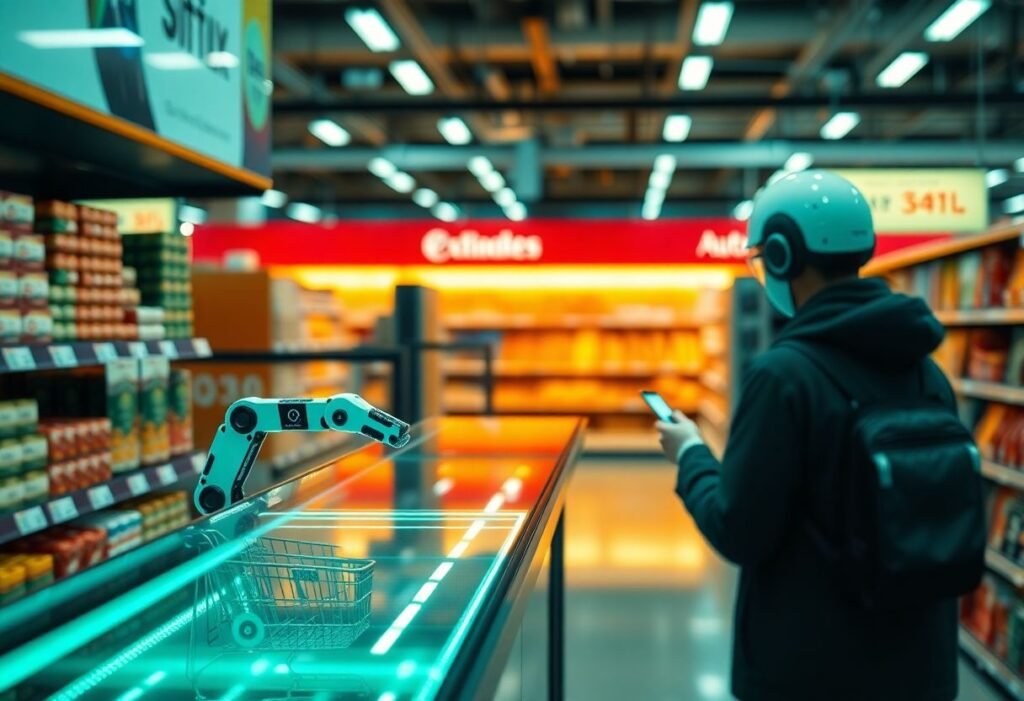As the retail landscape evolves, automation has emerged as a key driver of innovation, transforming operations and enhancing customer experiences. This article explores the profound changes that automation brings to retail, highlighting its role in streamlining processes, improving efficiency, and fostering greater customer engagement.
Enhancing Operational Efficiency through Automation
Automation has drastically reshaped how retailers manage operations, allowing for smoother workflows and significant cost reductions. By employing automated inventory management systems, retailers can monitor stock levels in real-time, ensuring that products remain available without over-managing stock. These systems utilize AI algorithms that predict demand trends, leading to smarter ordering and reduced waste. Consequently, this optimization fosters a more responsive supply chain, ultimately benefiting both retailers and customers.
Improving Customer Experience with Personalized Services
Automation tools have empowered retailers to enhance the customer journey significantly. Through data analysis, businesses can offer tailored recommendations based on a customer’s previous purchases and browsing behavior. For instance, chatbots are increasingly utilized to provide immediate customer service, answering queries around the clock. This level of personalized service can increase customer satisfaction and build brand loyalty, as patrons appreciate a shopping experience that feels uniquely crafted for them.
Integrating Smart Checkout Solutions
The introduction of smart checkout solutions marks a pivotal step forward in retail automation. Technologies such as self-checkout kiosks and mobile payment systems reduce wait times, catering to consumers’ desire for efficiency. These automated payment systems not only streamline the transaction process but also collect valuable data on purchasing habits. Retailers can employ this information to refine marketing strategies and inventory decisions, paving the way for a more data-driven approach to sales.
Robotics in Warehousing and Logistics
Robotic solutions in warehousing play a crucial role in boosting productivity. Automated guided vehicles (AGVs) and robotic arms efficiently manage inventory handling and order fulfillment tasks. As a result, retailers can relocate employees to more strategic roles, such as customer engagement and sales. This shift not only enhances operational output but also allows for a more enriching customer interaction, further emphasizing the role of human employees in the retail ecosystem.
Utilizing Data Analytics for Strategic Insight
Data analytics has become an integral part of retail operations thanks to automation. By leveraging big data, retailers can make informed decisions that align with market demands. Automation tools help systematically collect and analyze customer data, identifying purchasing trends and shopper preferences. This insight allows retailers to adjust products and marketing strategies efficiently, ultimately driving sales and improving overall profitability.
Future Trends in Retail Automation
The future of retail will undoubtedly be influenced by technological advancements in automation. Innovations such as Artificial Intelligence and the Internet of Things are set to redefine the retail landscape. Expect to see more retailers embracing augmented reality (AR) for virtual try-on solutions and advanced analytics to predict consumer behavior. Staying ahead in this rapidly evolving ecosystem means retailers must adapt swiftly to leverage these emerging tools.
Disclaimer: The information provided in this article reflects current knowledge and trends. Retailers should tailor their automation strategies based on specific business needs and market conditions.





















